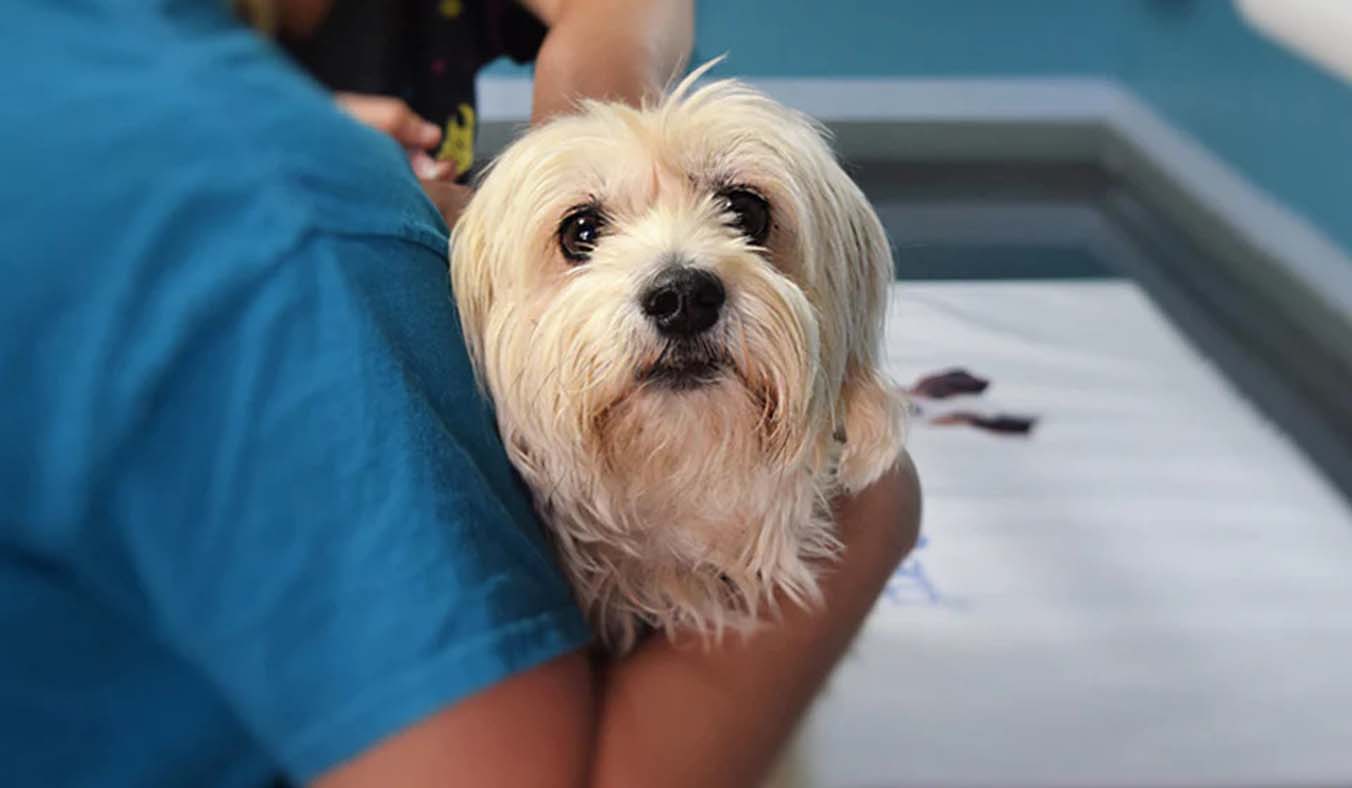That day, the sun was shining brightly. Lulu was lying in the sunny corner of the living room, her eyes half-closed, her fur glowing softly. I thought everything was fine, but when I got closer, I noticed that one of her hind legs was curled up slightly, and she didn’t jump up to greet me like she usually did. I gently touched her leg. She didn’t cry out but quickly pulled it back, her eyes tense and uneasy.
It was then I realized she might be injured. But why didn’t she scream like a human? Why didn’t she whimper or show signs of “severe pain”? The truth is, cats and dogs often suffer in silence—not because the pain isn’t intense, but because it’s too intense for them to express it in the ways we expect.
Today, I want to walk you through:
How do pets express pain?
How can we spot the signs early?
And what should we do when they’re injured?
1. Why Don’t Pets “Cry Out” When Hurt?
1. It’s an Instinct from the Wild
Whether cats or dogs, their ancestors were wild animals. In the wild, showing pain meant showing weakness—making them a target for predators or rivals. Over time, they evolved to endure silently, even when in excruciating pain.
Lulu is a rescue cat, naturally cautious and wary of strangers. Even when her leg was injured, she remained silent in front of the vet. It was only when the X-ray passed over her fractured bone that her eyes flinched slightly.
The vet told me, “That’s already one of the strongest signs of pain she can show.”
2. Pain Symptoms Are Often “Subtle”
We tend to think pain = crying, twitching, biting. But pets often show indirect signs of pain, such as:
- Becoming withdrawn or inactive
- Hiding in corners, avoiding touch
- Fast, shallow breathing and dilated pupils
- Decreased appetite or water intake
- Increased sleep and reduced movement
- Stiff walking, trouble jumping, or frequent falls
- Blank expression and disinterest in surroundings
These seemingly small changes are often their way of saying, “I’m hurting.” They just can’t put it into words—so we must rely on close observation and experience.
2. A “Hidden Injury” and the Pain Behind It
Lulu’s injury happened one unknown night. We have a low railing on our balcony that she often jumped onto to sunbathe. A few days passed and I noticed she wasn’t jumping up anymore, but assumed she just found a new spot.
Then she started licking her hind leg frequently. That’s when I realized something was wrong.
The vet diagnosed her with a slight bone displacement pressing on a nerve—similar to sciatic nerve pain in humans. A deep, continuous pain.
“She’s been in pain for over a week,” the vet told me. “You just didn’t notice soon enough.”
I was overwhelmed with guilt. She hadn’t cried, hadn’t struggled. She just lay quietly, waiting for me to notice in her most patient way.

3. How to Read Your Pet’s Pain Signals
1. Watch for Subtle Behavior Changes
Pets often express pain by doing less: less activity, less socializing, less eating.
For example:
- A playful dog suddenly lies around all day
- A cat who loved high spots now hides under the bed
- Suddenly urinating outside the litter box
- Stops eating midway or shakes their head while eating
These can all be hidden cries for help.
2. Use Touch to Detect Physical Clues
Gently stroke your pet from head to tail. Check for:
- Sudden tension or stiffness in certain areas
- Pulling away or flinching when touched
- Warmth, swelling, or unusual lumps
- Uneven nail wear, indicating uneven walking
This touch routine became a nightly ritual for Lulu. I gently massage her from neck to tail before bed. Any strange feedback becomes a point of focus.
3. Listen to Breathing and Vocal Sounds
Pain changes the way pets sound:
- Rapid, shallow breathing (like humans in pain)
- Occasional throat sounds or soft moans (especially in cats)
- Growling or light biting when touched—this isn’t aggression, it’s self-defense
They’re not being mean—they’re saying, “That hurts. Please don’t touch there.”
4. First Aid: What to Do Immediately After an Injury
1. Stay Calm
Our first instinct is panic—scooping them up and rushing to the vet. But this could worsen the injury.
Start by assessing the situation:
- Is there bleeding? How much?
- Can they stand? Any abnormal posture?
- Are they alert or in shock?
Take notes. Clear information helps your vet respond quickly.
2. Immobilize and Contain
For suspected bone or ligament injury, avoid further damage:
- Place your pet in a low, soft, stable area
- Wrap them gently in a towel to calm them
- Prevent jumping or running
- Use a small crate or carrier during transport to minimize movement
3. Record Videos + Take Notes
I recorded videos of Lulu limping and wrote down every detail I noticed. These helped the vet immensely and sped up the diagnosis.
5. Recovery: What We Can Do Beyond the Clinic
1. Create a “Healing Zone”
During Lulu’s recovery, I set up a quiet recovery space—low, enclosed, safe.
No stairs, no climbing, no other pets. Food, water, and litter box were all within reach.
In pain, pets fear unpredictability. A stable environment reassures them and supports healing.
2. Add Nutritional Support
For bone and cartilage repair, I gave Lulu:
- Glucosamine and chondroitin: for joint repair
- Omega-3 fatty acids: to reduce inflammation
- Collagen powder: supports ligament elasticity
- High-protein, low-phosphorus diet: helps muscle recovery
I picked supplements that were tasty and easy to digest, mixing them with her favorite wet food so she could enjoy eating even while healing.
3. Gentle Physical Therapy
With the vet’s guidance, we did:
- Passive leg stretching: improves blood flow
- Laser-pointer walking: encourages gentle movement
- Mat crawling: builds core strength
Just 3–5 minutes a day, consistently.
After a month, she was climbing ramps again—and even jumping onto low stools.

6. The Power of Emotion: Trust and Comfort in Pain
Beyond physical pain, injured pets feel loneliness. During her recovery, Lulu often just leaned against me—silent, still, but clearly comforted.
I played calming music, spoke to her softly, and sometimes read aloud to her. Her eyes gradually changed from fearful to calm and trusting.
Emotional healing can be harder than physical healing. And our presence is their most powerful “painkiller.”
7. Pain Awareness Is Every Pet Owner’s Responsibility
Lulu’s injury taught me something profound: silence doesn’t mean everything’s fine. In fact, it can mean they’re in more pain than we can imagine.
So I urge you:
- Don’t rely on cries or whimpers alone to detect pain
- Observe closely, touch often, and listen carefully
- Don’t ignore even the smallest behavioral changes
- Actively learn how to recognize signs of pet pain
- Offer practical help—not panic—when injury occurs
8. Don’t Wait Until It’s Too Late to Understand Their Pain
Your pet may not cry out—but that doesn’t mean it doesn’t hurt.
If they still lick your hand or rub against your leg, it means: “I trust you.”
Our job is not to betray that trust.
Even without a word, we must use our eyes, hands, and hearts to ask—
Are they in pain? Are they holding on until we finally notice?
Don’t wait until wounds worsen or bones misalign to realize they’ve been “asking for help” all along.
Make pain awareness a daily habit.
That is true respect for the life we share with our pets.
.jpg)


